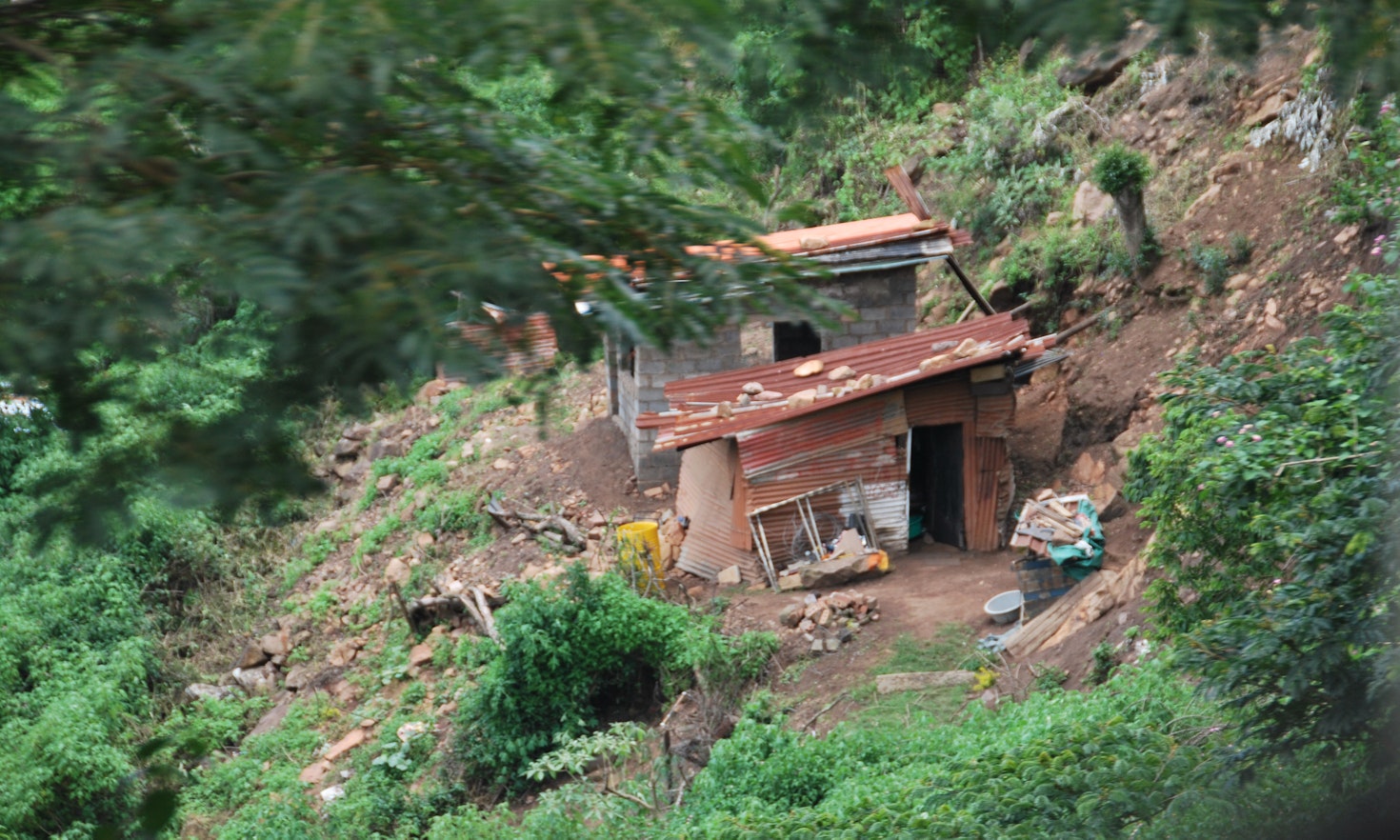
In all developing countries access to local services is a trenchant social issue. The place where you are born determines a large part of your wellbeing, including the probability of not dying at birth or being killed in a homicide, living a longer and decent life, having access to basic and good quality health, education, and security.
Some figures give an idea of the link between place of birth and wellbeing. In South Africa, Gauteng has a GDP per capita that is double the one of Eastern Cape1. In Argentina, Formosa has a GDP per capita more than 10 times lower than the City of Buenos Aires (2,256 versus 23,439 USD). Infant mortality in Formosa is three times higher than in Tierra del Fuego or Buenos Aires2. Infant mortality in the North West province of South Africa is almost 2.5 times higher than in Limpopo3. Life expectancy in the province of Chaco in Argentina is 5 years lower than in Neuquén4. In South Africa, life expectancy of 57.9 years in the Free State province is 10.5 years lower than in the Western Cape province, where it is 68,45. The City of Cape Town is reported to have the highest life expectancy with 71 years for women and 65,6 for men. In comparison the Mangaung Metropolitan Municipality has the lowest life expectancy in the country - 61.2 for women and 54.5 for men5.
Variation in inequality within provinces in Argentina is also enormous. With the provincial Gini index of 32 in 2011, being similar to Canada and Australia. Tierra del Fuego, for example, is very equal by Latin American standards, while Salta and Corrientes are very unequal, coming in at 45 and 46, respectively. South Africa is today the most unequal country in the world. But its national Gini index of 63, masks enormous variation among its provinces. Eastern Cape, KwaZulu-Natal, and Limpopo are more unequal than any country in the world: their Gini indices reach 75. Free State and Gauteng, on the contrary, have Gini indices that are about 15 points lower. Improving living conditions of the poorer population plays a fundamental role in achieving sustainable development, and these living conditions depend on access to basic services, which in most cases depend on subnational units of government.
Asymmetries of the Local Government System
Argentina: Taxes and Funds at the Federal Level; Functions at the Subnational Level In Argentina, the national constitution recognizes three levels of government – federal (or national), provinces and municipalities. But in practice, the federal government holds the most significant taxing power. The provinces have delegated large amounts of responsibility to the national government for the collection of revenue such as income taxes, sales, special taxes and taxes on fuel. The resulting revenue concentration contrasts with a process of decentralization of responsibilities whereby key social functions are in provincial hands. The taxing power concentration in the federal government reduces the scope to which provinces and municipalities can exercise their power since they are prevented from creating similar taxes to the ones collected in the other level of government. The only activities that are the exclusive competence of the national authorities are those related to defense and foreign affairs. In the areas of economic affairs, public security, and social infrastructure, the national government shares responsibility with its provinces, while the latter have exclusive competence in primary and secondary education and municipal organization and services. The provinces are currently in charge of most social expenditures including basic education, health services, poverty programs, housing and economic infrastructure. Despite this, the national government maintains a significant regulatory power in many of these areas and manages some programs within these sectors, such as social security, social programs for poorer households, and complementary educational programs that subsidize poorer schools. Given this decentralization of spending and fiscal centralization, there is a high degree of vertical fiscal imbalance. Argentina addresses this large vertical fiscal imbalance through a complex system of intergovernmental transfers. Over time, the system has redistributed revenue from the richest central region to the most backward provinces in the Northwest and Northeast. It has also favored richer, low-density Patagonian provinces. Despite this, the system has corrected part of the large regional income asymmetries among provinces in Argentina. Although it has corrected regional income inequalities, the revenue transfer system has not had a substantial impact on provincial and local welfare indicators, as most social functions depend on the provinces and are strongly correlated with provincial spending, particularly in social areas. As a result, richer, larger, more urban local governments have more capabilities for dealing with the challenges posed by the delivery of social services. Whereas poorer, smaller, and especially more rural municipalities struggle to do so. This further reinforces inequalities across the territory.
South Africa: Municipalities as Policy-Takers
The South African Constitution also recognizes three spheres of government, each sphere’s autonomy, and provides for each sphere’s powers and functions. The 1996 Constitution guarantees municipalities original responsibilities that the national and provincial government cannot encroach upon or take away, albeit these responsibilities are allocated to municipalities in a uniform fashion. This uniformity of the functions given to municipalities has caused issues for small, less populated, and economically weak municipalities that are overburdened, incapacitated and are struggling to perform their original functions, as well as for big, robust municipalities that are capacitated and feel constrained and limited within the original functions. Stronger metropolitan municipalities in economic and population terms require more responsibilities to respond to the challenges of in-ward migration, overpopulation, and increased demands for services within their jurisdictions. This raises the argument for differentiated responsibilities for municipalities so as to equip them to respond to the challenges and needs of their communities – especially as the center struggles to hold all constituent units together. A uniform approach to local government’s responsibilities is premised on the equal delivery of services to all, or at least something as close to that as possible. Unfortunately, this has not translated in reality in South Africa. This is due to de facto and de jure differences between municipalities that makes uniformity impractical. Whilst rural, incapacitated municipalities require more supervision, capacity-building, and support from national and provincial governments to deliver basic services, the approach to urban, capacitated municipalities is different – they require more functions, that align with local government’s original functions to be able to deliver basic services at a larger scale and an accelerated pace.
Metropolitan municipalities are growing frustrated given the little room to they have to move to address their societal issues. For example, communities usually lay their complaints with inefficient public transport at metros’ doorsteps, not understanding that this function is largely the responsibility of national and provincial governments with the exception of municipal public transport that only focuses on the municipal bus services. And it is not hard to understand why communities do this – if municipalities are responsible for spatial planning and thus determine where houses/settlements, businesses, places of worship, schools, hospitals, or police stations should be built and operated, then shouldn’t municipalities determine and control the different transport nodes within their jurisdictions and how they are to operate in an integrated and efficient way? Wouldn’t municipalities be better placed to determine this, as opposed to national and provincial government? And again, in line with the argument for differentiation, not all municipalities would be better placed, however those that are (metropolitan municipalities) should be given the opportunity to do so. National and provincial governments often use delegations and agency agreements to ‘transfer’ additional responsibilities to municipalities; however, these instruments maintain the status quo of using municipalities as mere policy-takers instead of policy-makers. And often ‘funds do not follow the functions’ as they should, whether it be the funds that attach to the delegated function (transfers) or revenue that is generated through the delegated function.
Comparative Implications
In both cases, the federal government has limited functions to address territorial inequalities. This is so because several key social services are at the subnational level, being it either provincial or local. The key problem then becomes how capable are subnational units at addressing those social challenges. The capability can be determined by looking at a number of factors, such as capacity like human resources, appropriately skilled labor, finances, infrastructure, economies of scale and their revenue generation ability, good intergovernmental relations or cooperative government and subnational political leadership geared at solving social challenges. We see that, in both cases and for different reasons, richer, larger, more urban local governments have more capabilities for delivering better social services. This could help them improve some social indicators within their territories. The challenge, then, becomes how do poorer and more rural municipalities address inadequate social service delivery in a context of symmetrical decentralization of functions which does not particularly help them in South Africa, and an imbalanced decentralization process in Argentina, where they have new functions but fewer funds. For South African poorer, more rural municipalities the answer could lie in going back to basics – with a focus on strengthening good governance and institutional capacity and fixing the financial management tied to the functions currently undertaken in those municipalities. Here, the goal should be improved delivery of basic social services, development of current municipal functions to achieve optimal performance, skills transfer programs between municipalities, provincial and national government and the exploration of further conditional grants streamlined towards socio-economic projects, with stricter implementation requirements, transparency and accountability requirements. The aim should be to improve the functioning of poorer, rural municipalities to better serve communities, and this requires getting the basics correct.



Citation
This content is licensed under a Creative Commons Attribution 4.0 International license except for third-party materials or where otherwise noted.


This research is part of the LoGov project. The project has received funding from the European Union‘s Horizon 2020 research and innovation programme under Grant Agreement No 823961.









